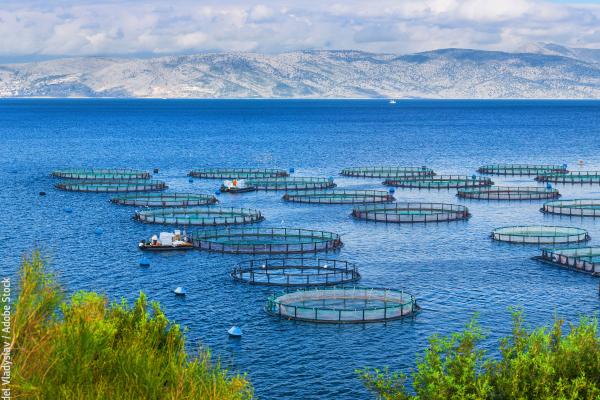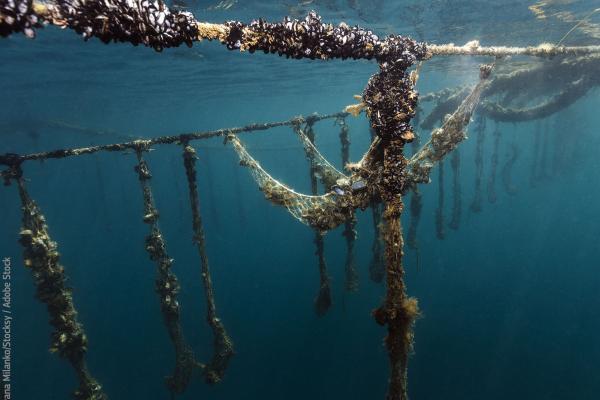Aquaculture production
Aquaculture is one of the fastest growing food production sectors in the world and is an important contributor to global food supply and economic growth. In Europe, aquaculture plays a vital role in coastal and river areas and in preserving the maritime river and fishing culture.
In 2020, the EU aquaculture sector reached 1.2 million tons in sales volume and €3.9 billion in turnover value and directly employed around 57,000 people working for approximately 14,000 enterprises. The enterprises are primarily small and family-owned (STECF 22-17).
67% of the aquaculture production in the EU is concentrated in four countries: France, Greece, Spain, and Italy. More than half of the total aquaculture production volume focuses on shellfish, while marine and freshwater fish account for around 21% and 28% of the total volume. The most farmed species are mussels, trout, oysters, seabream, seabass, carp, and tuna (EU Aquaculture Infographic - Socioeconomic Development (2008 - 2020)).
Algae production is still limited in the EU but is increasing.
Sustainable aquaculture
The sustainable development of aquaculture is one of the main objectives of the common fisheries policy. Aquaculture production is also recognised by the European Green Deal as a source of “low carbon” protein for food and feed.
Aquaculture production is subject to licencing and monitoring procedures in EU countries and must comply with strict requirements under EU legislation and national legislation to ensure it respects human and animal health and the environment. The most important aspects in terms of environmental sustainability of EU aquaculture relate to: the assessment, monitoring and limitation of the environmental impact of aquaculture activities (e.g. in terms of nutrients and organic matter discharge from aquaculture farms in waters), the use of alien or locally absent species, feed ingredients for carnivorous fish (alternatives to wild fish), management of diseases and use of veterinary medicines and other substances with low environmental impact. Another increasingly important aspect is animal welfare in fish farming.
News

- News article
Algae may be small, but their potential is huge. From sustainable food to marine restoration and bioplastics, algae offer innovative solutions that benefit both people and planet.

- News article
Thanks to EU support, the Swedish start-up company KOASTAL is testing an innovative business model for large scale sustainable sugar kelp cultivation on the west coast of Sweden. The idea is to create a franchise concept where small-scale players, including fishers, will be assisted with everything
- 2 min read

- News article
Blue Career Centre for Aquaculture Education supported by a gamification approach and distance learning platform. The BlueAquaEdu project kicked off in September 2023 as one of the blue careers project supported by the European Maritime, Fisheries and Aquaculture Fund (EMFAF).
Publications
A new strategic vision for sustainable aquaculture production and consumption in the European Union
- 10 FEBRUARY 2021



